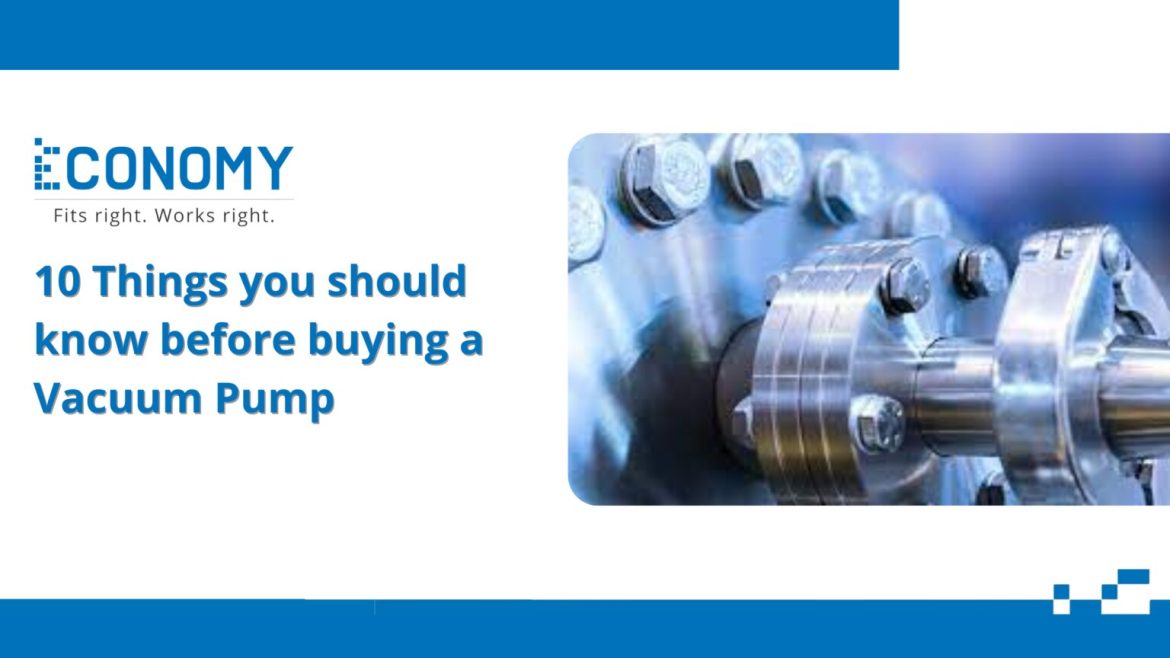When considering the purchase of a vacuum pump, understanding the different types available is crucial, as each type serves distinct applications. Positive displacement pumps, such as rotary vane and diaphragm pumps, are ideal for high-vacuum requirements, while momentum transfer pumps like turbomolecular and diffusion pumps are best suited for ultra-high vacuum needs. Entrapment pumps, including cryogenic and ion pumps, are used for achieving the highest vacuum levels. Knowing which type aligns with your specific application ensures optimal performance and efficiency.
Another essential aspect is determining the vacuum level required for your process. Vacuum levels are categorized into rough, medium, high, and ultra-high vacuums, each measured in millibars (mbar) or similar units. For example, rough vacuum ranges from 1 to 10^3 mbar, while ultra-high vacuum falls below 10^-7 mbar. Selecting a pump capable of achieving and maintaining the necessary vacuum level is critical to the success of your application.
The flow rate, or pumping speed, is a key factor to consider as it indicates how quickly the pump can evacuate gas from the system, measured in volume per time, such as liters per minute. Ensuring the pump has an adequate flow rate to meet your application’s demands without overworking is vital for efficient operation and longevity.
Chemical compatibility is another important consideration, particularly if your application involves corrosive or reactive substances. Pumps come in various materials, and selecting one that resists corrosion and is compatible with the chemicals or gases you’ll be handling will prevent damage and ensure reliable operation.
When deciding between oil-free and oil-sealed pumps, it’s important to weigh the pros and cons. Oil-sealed pumps, like rotary vane pumps, are common and effective but require regular maintenance and pose contamination risks. Conversely, oil-free pumps, such as diaphragm or scroll pumps, are cleaner and demand less maintenance, though they can be more costly. Your cleanliness needs and maintenance capabilities will guide this choice.
Noise and vibration levels should not be overlooked, as they can significantly impact your work environment and processes. Low-noise and low-vibration pumps are particularly desirable in laboratories and production facilities where noise control is important. Checking manufacturer specifications or user reviews for noise ratings can help you make an informed decision.
Understanding the maintenance requirements of the pump is crucial for ensuring its long-term reliability and performance. Routine servicing, part replacements, and potential downtime should be factored into your decision. Some vacuum pumps demand more frequent maintenance than others, and the availability of spare parts and ease of servicing can affect operational efficiency.
Energy consumption is another critical factor, especially for pumps that operate continuously. Comparing the power ratings of different models helps identify energy-efficient options that, while possibly more expensive upfront, can offer significant savings in operating costs over time.
The physical size and portability of the pump might also be important depending on your workspace and application. Ensuring the pump fits within your available space and can be easily moved if necessary is essential, particularly for applications that require mobility or fieldwork. Portable pumps offer versatility but might come with trade-offs in power or capacity.
Finally, cost and budget considerations are always paramount. Vacuum pumps vary widely in price, and while higher-priced models often deliver better performance and durability, there are cost-effective options that can meet your needs. Balancing the initial investment with operational costs, maintenance, and expected lifespan will help you make a financially sound decision.
In conclusion, the vacuum pump selection guide for purchasing a vacuum pump involves careful evaluation of several factors, from the type and vacuum level to chemical compatibility, maintenance needs, and budget constraints. Thorough research and consultation with experts or suppliers can guide you to the best pump for your specific requirements, ensuring efficient and reliable operation for your applications.




